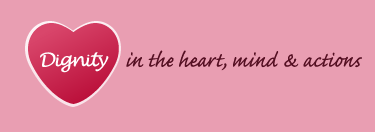DIGNITY THROUGH CREATIVE ACTIVITY
The idea of using Guidelines to Art as a tool to help people was initially developed by John Whyman, a retired school teacher, around eighteen years ago. After his retirement, John began volunteering at local hospices, close to his hometown of Rochdale. It was during this time that he realised many people could either not draw or lacked the confidence in doing so. This is when he began to use hand cut stencils from odd bits of card and cornflakes packets, allowing these to be used as a basis for drawing and subsequently applying water colour.
Through his ideas, time, commitment and genuine passion for his work, John was nominated for an award with the Society for All Artists. In July 2007, John was awarded a bursary of £500 through this organisation for art materials. So far, the Society for All Artists has supplied and distributed these kits to over three hundred BUPA care homes and workshops are continuing to be run with activity organisers around England, Scotland and Wales demonstrating their use. Hospices and independent care homes have also been approached, with positive feedback being given at the end of each workshop.
"Some people were enthusiastic whilst others appeared much more anxious and reluctant regarding their abilities. At the start of the session the participants required much reassurance in feeling comfortable with what they were doing... One of the ladies was particularly nervous regarding her ability to paint since she has glaucoma, however, with support and reassurance and encouragement from the group, she was able to complete the process and produce a fantastic work of art which she, herself seemed surprised with..."
This study is summarised in the Executive Summary - "Guidelines to Art- Making Art Available to All", where researchers from the Faculty of Medicine and Health Sciences at the University of Nottingham were invited to work across the UK alongside the organisation, staff and 'budding artists' using Guidelines to Art. A number of locations visited by the researchers included hospital wards and hospices, also organisations such as The Stroke Association. Each of the venues was identified as having a role in caring for adults or older people, or for people with a combination of both physical or mental health problems. Many of the people with physical health problems were deemed to be 'living with a life-debilitating illness' or being 'terminally ill' and often being in receipt of palliative care. The nature of people's mental health problems encompassed both functional as well as organic mental health needs. Needless to say, due to the nature of health and illness, combinations of both physical and mental health problems often presented collectively.
Positive reactions to the Guidelines to Art were elicited from all those involved within the evaluation project. A large extent of these was surrounding the simplicity of the templates as well as the element of surprise at individual capabilities of art alongside people's artistic achievements through using the Guidelines to Art.
"Something that's so simple translates into the delight of the patients who attend... it's absolutely wonderful!"
User groups experienced a number of personal benefits from the scheme. It was reported that it became apparent that many people using the Guidelines to Art experienced a sense of relaxation as they were drawing and painting. Staff have also noticed improved aspects of self confidence, achievement, identity and self-worth related to perceived ability rather than disability or illness, changes in mood and possession or ownership of one's individuality, skill and talent, identified as 'a focus in ability rather than disability'
The art was commented upon as providing a focal point which aided the development of new relationships through providing people with a topic to talk about. Observations also supported this in finding that art brought people together who might not otherwise have engaged either in an activity or with one another. When in a working in a group, people were noticed to be particularly supportive of one another and people's moods were noticed to be improved. A 'community spirit' was also identified through people wanting to showcase their work, develop and open the opportunity of using the Guidelines to Art for others.
The social benefits of using the Guidelines to Art have encompassed engagement, forming a group identity, socialisation rather than isolation and developing relationships with others. There also appears to be a sense of importance amongst people to feel that they have contributed towards something, in being able to share their thoughts and ideas with others.
"People come out of their shell because they're engaging and they start to see their life in a different way
"Everyone has their own contribution, people feel valued..."
The findings from this research have been overwhelmingly positive regarding the use of the Guidelines to Art as well as the benefits of art for individuals. The researchers comments that the interviews elicited particularly moving and often poignant insights into the impacts and effects of art not only for the individuals involved but also for workers and carers as well.
